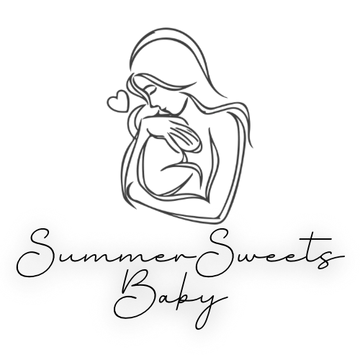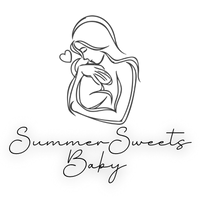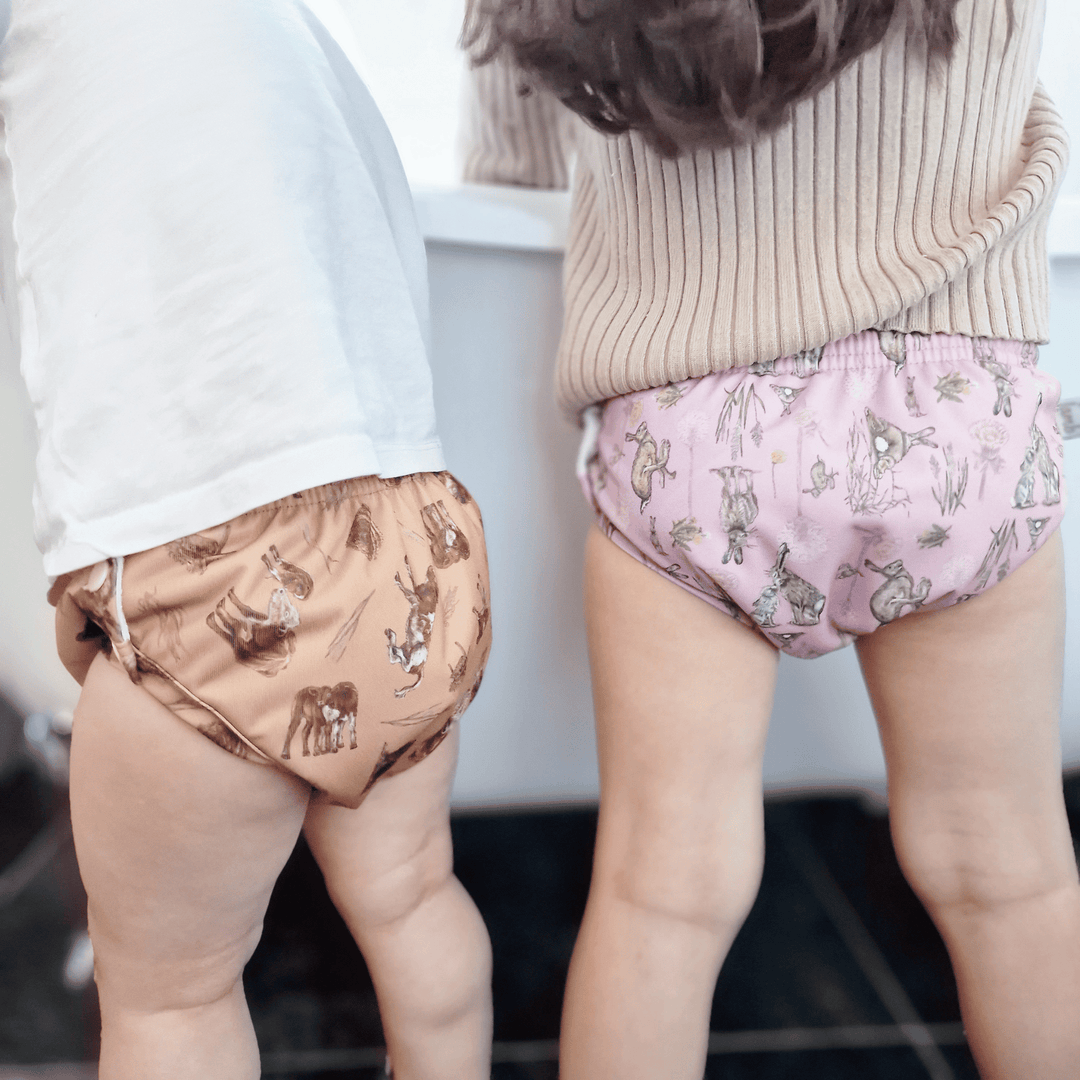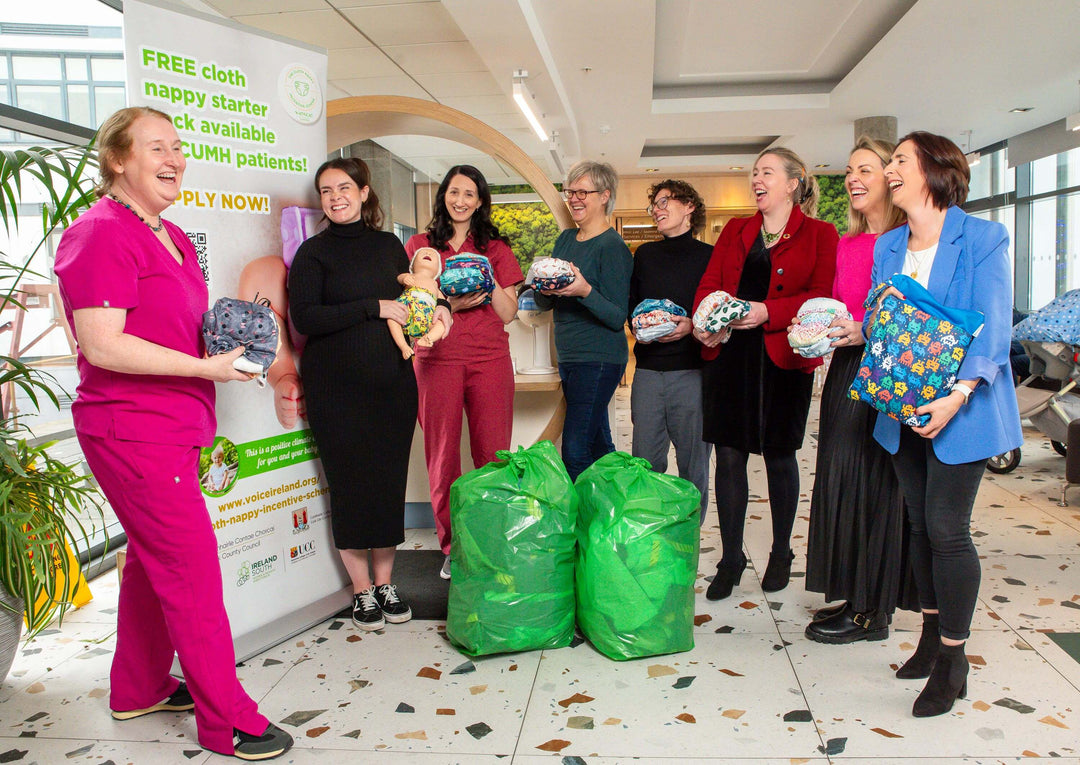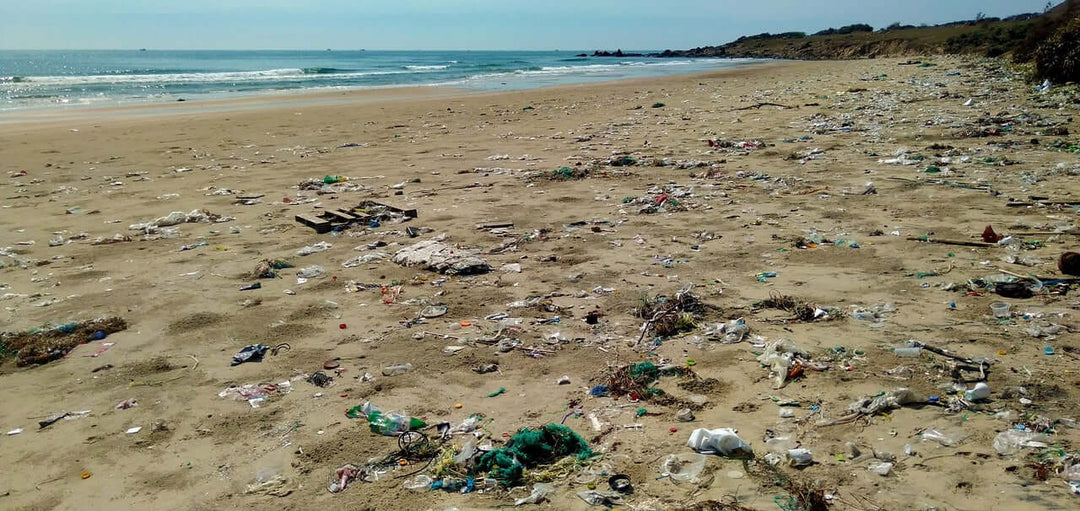A list of terms used by the Cloth Nappy Community
A list of terms used by the Cloth Nappy Community
We appreciate that the first foray into using cloth nappies on your little one is often confusing and in some cases simply overwhelming, but we have compiled a list of the most common abbreviations used within our cloth nappy community.
AIO An abbreviation for all-in-one nappies.
All-In-One This cloth nappy is one piece. The cover and insert are sewn together.
AI2 An abbreviation for all-in-two nappies.
All-In-Two This cloth nappy comes in two pieces. All-in-twos are a cover that allows you to snap in/snap out your inserts for faster drying and multiple uses.
Aplix Aplix is similar to Velcro, more commonly called hook and loop, and is a type of nappy closure.
Boingo A clip that closes prefolds. They are shorter than Snappi nappy fasteners, and you need two to fasten the nappy closed instead of one. No need to worry about sizing.
CBI Charcoal Bamboo Insert
CD A cloth diaper. An American/Canadian term for cloth diaper. Nappy and diaper are entirely interchangeable terms.
CN A cloth nappy. A European term for cloth diaper. Nappy and diaper are entirely interchangeable terms.
Cloth Wipes Usually an 8×8 or 12x12 square of fabric used to wipe your baby’s bum clean. Terry, flannel, fleece, velour and cotton are the most common materials available for these wipes.
Cloth Wipe Solution You can either make your own, or purchase pre-made concentrated cloth wipe bits. A simple, dermatologically friendly cleansing solution for your cloth wipes.
CO Coconut Oil - used for preventing nappy rash. It is usually cloth safe and dermatologically friendly.
Diaper/Nappy Cover A cover is the outer shell needed to make a cloth diaper/nappy water resistant. This term is interchangeable with the term nappy wrap.
Diaper Sprayer An attachment, like a bidet, for your toilet to spray off solid waste. More common in America/Canada.
DG Double gussets - a second set of elastics slightly inside the leg elastics. May be internal or external gussets.
Doubler A doubler is another insert/absorbent that can be added to the nappy and that can “double” the absorbency of the nappy.
EBF Exclusively breastfed - usually referring to baby’s poo. EBF waste is water-soluble and doesn’t need to be rinsed before being placed in the washing machine. And don’t worry about your washing machine; there will be no issue with this with the correct wash cycles.
Fitted Nappy The absorbent part that goes under a cover/wrap. Similar in appearance to a bulky insert, but looks and fits like a nappy. A fitted nappy requires a cover otherwise there will be a high risk of leaks. The absorbency of fitted cloth nappies varies and depends on the materials used in the construction of the nappy.
Flat An older style, yet incredibly efficient type of cloth nappy. A large square of fabric that is typically made from cotton (bleached or organic cotton) or a bamboo/cotton mixture. Flats are folded in a multitude of ways to either fit around baby and be fastened with a nappy fastener, or may be pad folded and laid inside of a cover or pocket nappy. Flats dry extremely quickly and are an incredibly economical way to use cloth nappies.
Fleece Fleece is a common fabric used inside cloth nappies, most commonly known as microfleece. This fabric is stay-dry and keeps baby's bum dry. It may also be used as a cover or you may see fleece used as a reusable nappy liner (fleecy liner).
HE High Efficiency (HE washing machines require HE compatible detergent). Not applicable to washing machines in Europe.
Hybrid Nappies in which the inner lining can be thrown away or reusable and the outer shell is washed between uses. These are normally used for going on holiday or somewhere you cannot always wash inserts and need a disposable option.
Insert An insert is normally a rectangular-shaped layered fabric that is inserted into the pocket opening of a pocket-style cloth nappy, or may be laid in a cover. The most common types of inserts are bamboo, cotton, hemp, and microfibre or combinations of these materials.
Liner A liner may be a cloth reusable or disposable layer of material that is placed closest to baby's bum for easy clean up of solid waste. Also used for nappy protection when a non-safe cloth nappy cream is being used.
MF Microfibre (typically referring to an insert). Often the cheapest price point insert, and a superb way to begin using pocket cloth nappies. This material should never be placed directly on your baby’s skin as it can easily dry it out.
Minky A synthetic material that is often used on the outer or inner shell. Minky is stain resistant and very soft.
Non-HE Non-High Efficiency (a traditional top-loading washing machine, or detergent)
OS A one-size cloth nappy. Typically suitable from just after birth to 3 years of age, but depends on size of baby. Also known as birth-to-potty sizing.
Pail Liner or Nappy Pail Pail liners are used to hold dirty nappies. Economical, space saving, and incredibly easy to use, pail liners are made from PUL/TPU and are water resistant, just like nappies. You use them and once full, wash them with every load of nappies. Nappy pails are buckets to store nappies between washes. These may be open pails or closed.
Prefolds A flat that has been pre-folded and sewn together into a rectangle. These are super absorbers and can also be fastened around baby in a fitted-style.
Pocket Nappy The most common type of cloth nappy. A pocket nappy is a cover with a fleece/suede lining that has an opening to stuff in an insert of your choice. Pockets allow you to choose and customise the absorbency. Often the most affordable type of nappy.
PUL PUL stands for polyurethane laminate – it’s a water-resistant material used to make outer shells of many popular brands of nappies and nappy covers. PUL was invented first for hospitals and mechanics. PUL will not bleed, is made to withstand incredibly high temperatures, and withstands frequent washes and harsh chemicals. PUL is not a delicate fabric thus making it an exceptional fabric for cloth nappies.
Snappi A fastener that holds flats, fitteds, prefolds, flour sack towels, and terries onto baby safely. A simple and superb option for fastening your nappy.
Soaker Also known as an insert.
Stash A collection of nappies. If you're in the cloth nappy community pages on social media, you'll often hear or see people's cloth nappy stashes.
WAHM Work At Home Mom. Usually referring to mothers that make handmade nappies and inserts or run a business.
Wet Bag A portable bag made from PUL/TPU to store dirty nappies, wet clothing, toys or other items while on the go.
Wicking Wicking fabric keeps your baby’s bum dry. The process of moisture wicking transfers the moisture from urine and sweat through one fabric and into another (in this case the insert). The top of the fabric will be dry, while the bottom of it will be wet.
Wipes Solution An easy and dermatologically friendly way of dampening cloth wipes before using them on your baby's bum

